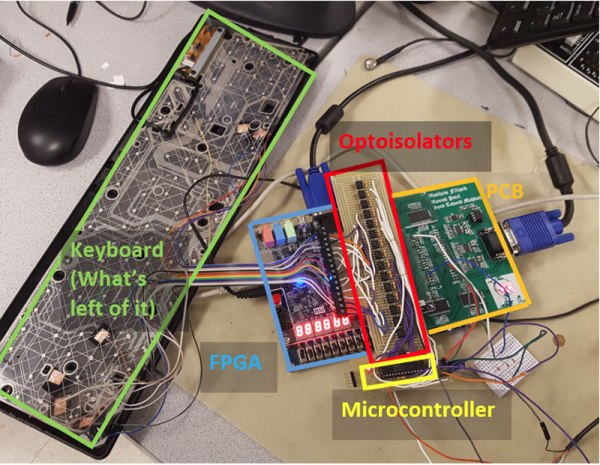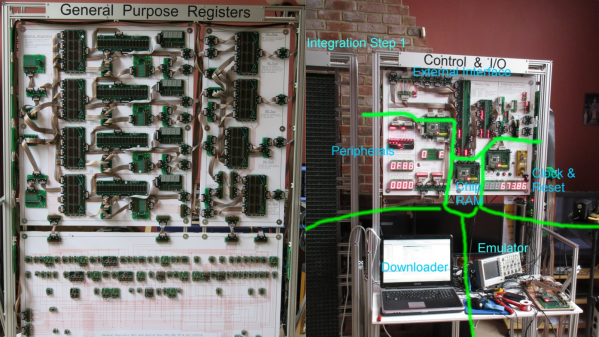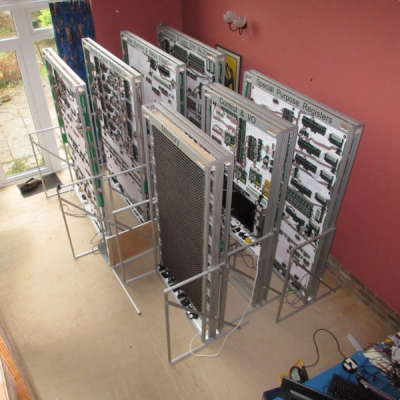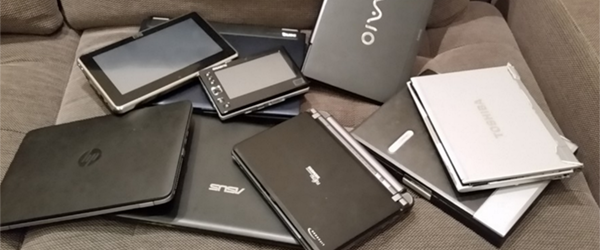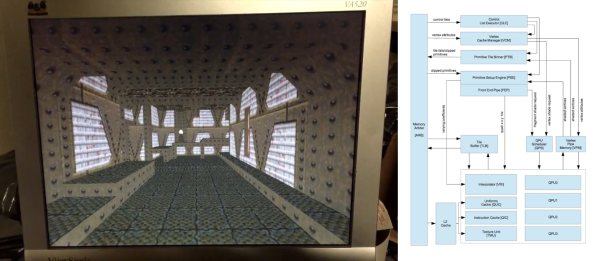There are reports of a Tetris movie with a sizable budget, and with it come a plentiful amount of questions about how that would work. Who would the characters be? What kind of lines would there be to clear? Whatever the answers, we can all still play the classic game in the meantime. And, thanks to some of the engineering students at Cornell, we could play it without using a controller.
This hack comes from [Bruce Land]’s FPGA design course. The group’s game uses a video camera which outputs a standard NTSC signal and also does some filtering to detect the user. From there, the user can move their hands to different regions of the screen, which controls the movement of the Tetris pieces. This information is sent across GPIO to another FPGA which uses that to then play the game.
This game is done entirely in hardware, making it rather unique. All game dynamics including block generation, movement, and boundary conditions are set in hardware and all of the skin recognition is done in hardware as well. Be sure to check out the video of the students playing the game, and if you’re really into hand gesture-driven fun, you aren’t just limited to Tetris, you can also drive a car.


